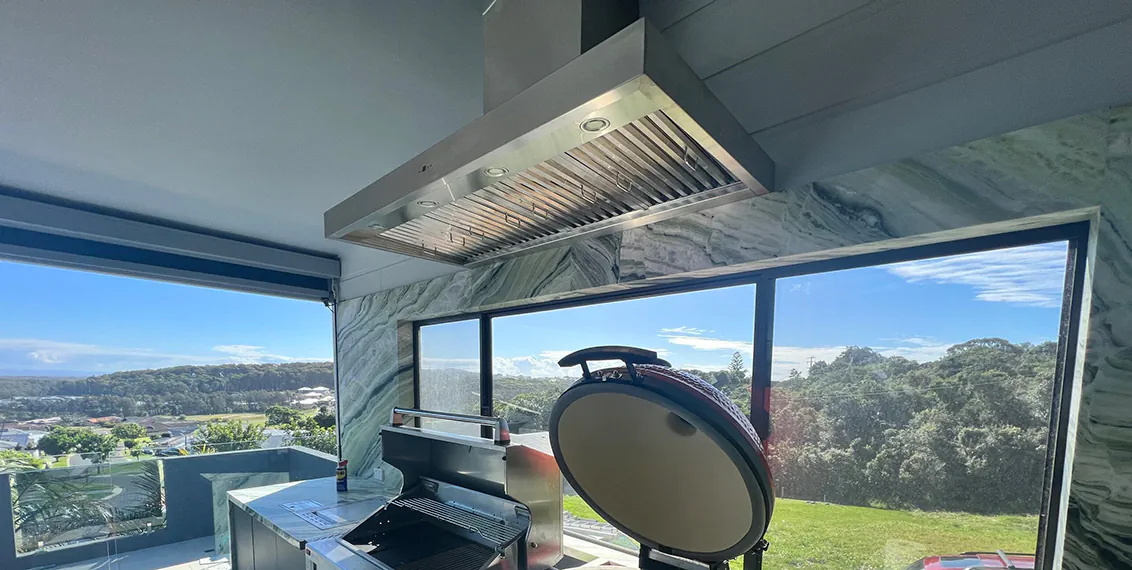Read time: 5 mins
Getting the size of your rangehood right isn't just about aesthetics — it's essential for proper ventilation. Undersized rangehoods can leave steam, smoke and airborne grease lingering in your kitchen, no matter how powerful the motor claims to be.
This guide breaks down how to choose the correct width, mounting height, and extraction rate for your setup. Whether you've got a gas cooktop or an induction surface, these key sizing principles will ensure your rangehood performs exactly as it should.
How wide should your rangehood be?
As a general rule, your rangehood should be at least as wide as your cooktop — and ideally a little wider. This ensures it captures rising smoke, steam, and grease before they escape into the kitchen.
Standard cooktops are usually 60cm, 90cm or 120cm wide. Your rangehood should match or slightly exceed that width to provide full coverage. For example, if your cooktop is 90cm wide, a 90–100cm rangehood is typically recommended.
Wider rangehoods offer better performance by extending the capture zone beyond the cooktop edges — especially helpful when cooking on side burners or using larger pots and pans.
- 60cm cooktop → 60–70cm rangehood
- 90cm cooktop → 90–100cm rangehood
- 120cm cooktop → 120–130cm rangehood
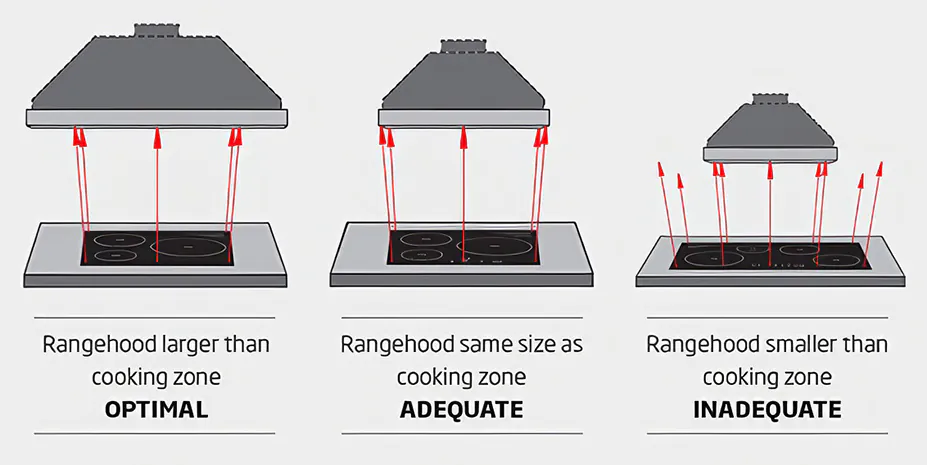
Why choose a larger rangehood?
Going slightly wider than your cooktop isn't just about capturing more steam — it can also make your kitchen safer, cleaner, and easier to maintain over time. Here's why it's worth considering:
Improved safety: A wider capture zone helps contain smoke and steam, especially during extended cooking sessions or when a pan is accidentally left on. This can prevent smoke alarms from triggering unnecessarily.
Easier cleaning: Extra coverage means less grease builds up on surrounding cabinetry and walls — and less cleaning inside the hood itself.
Longer lifespan: A larger rangehood doesn't have to work as hard to keep your kitchen clear, reducing wear on the motor and extending the life of the unit.
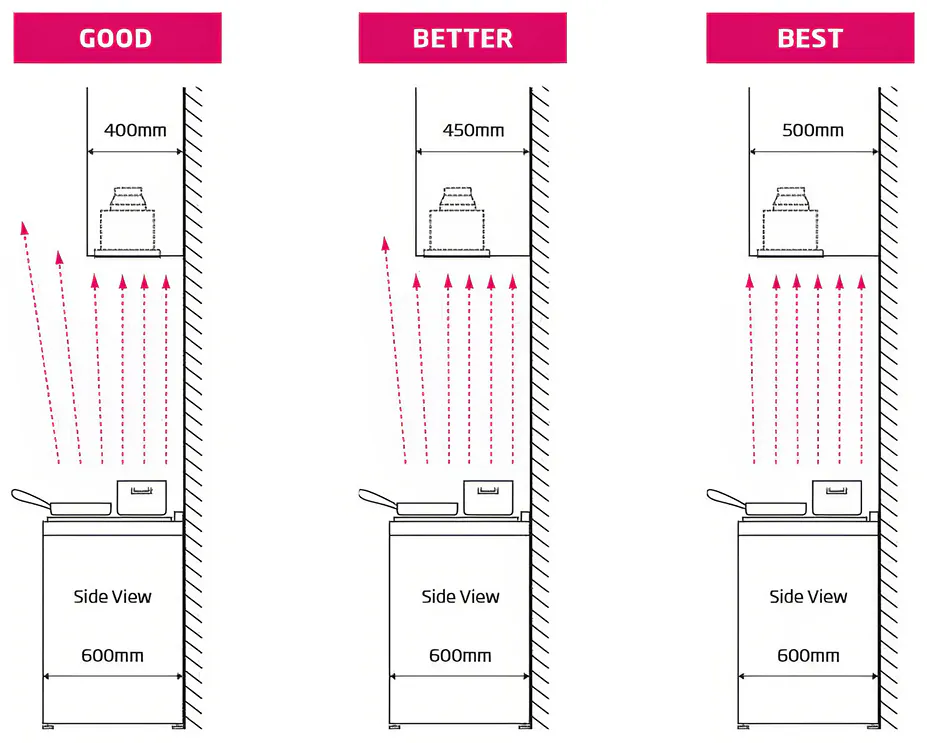
Recommended mounting height
The distance between your cooktop and rangehood is critical. Too low, and it can interfere with cooking. Too high, and it may struggle to capture steam and odours effectively.
The ideal mounting height depends on the type of rangehood and the kind of cooktop you're using. Most manufacturers recommend a clearance between 600mm and 750mm from the top of the cooktop to the underside of the rangehood.
Gas cooktops typically require a slightly higher clearance due to the open flame. Always check the specifications for your rangehood model, but the guidelines below are a reliable starting point:
- Electric and gas cooktops: 650mm clearance
- Wok Burner: 750mm clearance
- Induction Cooktop: 750mm clearance
- Ceiling-mounted models may require 1000mm or more
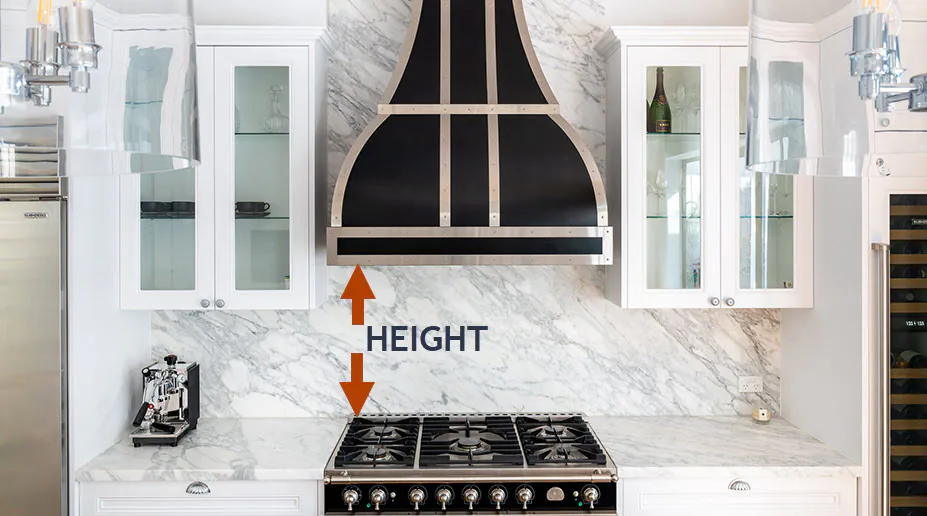
Understanding airflow and extraction rates
Rangehood performance isn't just about width — it's also about how much air it can move. This is measured in cubic metres per hour (m³/hr) and refers to how quickly the unit can extract air from your kitchen.
As a baseline, your rangehood should be able to exchange the air in your kitchen 10 to 15 times per hour. To estimate the ideal airflow rate, multiply the volume of your kitchen (length × width × ceiling height) by 10 or 12.
For example, a 4×3m kitchen with a 2.5m ceiling has a volume of 30m³. That means you'll want a rangehood with an extraction rate of at least 300–360 m³/hr — but more is often better if you cook frequently or use gas.
- Small kitchens (up to 10m²): 250–400 m³/hr
- Medium kitchens (10–20m²): 400–600 m³/hr
- Large kitchens or open-plan: 700+ m³/hr
How your cooking style affects your choice
What and how you cook will influence the extraction rate you need—but always in relation to your kitchen's size. The basic extraction rate calculation (kitchen volume × 10–12) provides a starting point, and you can adjust upward based on your cooking style.
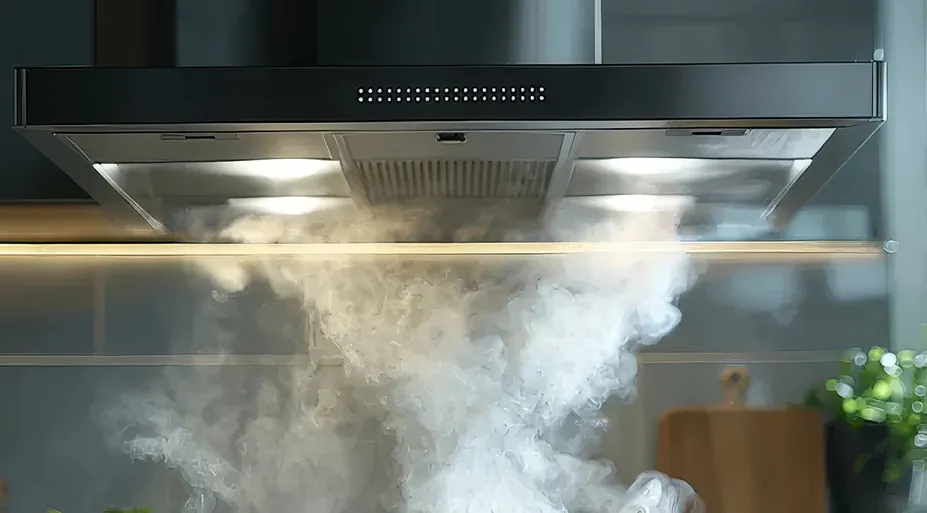
If you regularly grill, fry, or cook fatty foods, you'll generate more smoke, steam, and grease. In these cases, it's wise to select a model with a higher extraction rate than your kitchen volume alone would suggest. Conversely, if you mostly boil, steam, or simmer, the standard calculation usually provides sufficient ventilation.
In short, use your kitchen volume calculation as a baseline and then adjust upward depending on your typical cooking habits:
- Light cooking (boiling, steaming): baseline extraction rate (kitchen volume × 10–12)
- Moderate cooking (everyday meals): increase extraction rate by 10–20%
- Heavy cooking (frequent frying, grilling, fatty foods): increase extraction rate by 20–30%
The location of your cooktop
The position of your cooktop is another important consideration to make when selecting a range hood. The location of your cooktop and its surrounding environment will determine what rangehood you are able to use.
Additionally, the ability to access or introduce a venting system will determine what rangehood options you have available. For more information on this topic, you can check out this article that covers the different types of range hoods and exhausts and what is right for your kitchen.
Final tips for getting the size right
Before choosing your rangehood, consider these additional tips to help you make the most informed decision possible:
Check manufacturer guidelines: Always consult the manufacturer's recommendations for mounting heights, widths, and airflow rates specific to your model.
Go wider for heavy use: If you regularly cook with multiple burners or large pans, opt for a wider model to ensure better ventilation.
Consider your kitchen layout: Open-plan kitchens may require more powerful models or wider canopies to adequately clear smoke and steam.
Think long-term: Investing in a higher-capacity rangehood not only maintains cleaner air but can also extend the appliance's lifespan and simplify maintenance.
Choosing the right size rangehood from the start ensures your kitchen stays clean, comfortable, and safe, no matter how you like to cook.


